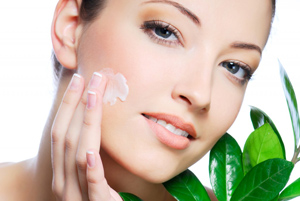What is seborrhoeic dermatitis?
Seborrhoeic dermatitis is simply a type of skin inflammation. Common with a newborn it manifests as cradle cap. It is also seen on adults as flaky, white or yellowish scales often on the scalp – causing dandruff or in other oily areas of the upper body: in the ear, inside of elbow or around the eyes. Also can show up on the chest, face and back. Sometimes as rash on the face. It is sometimes referred to as seborrhea.
It is thought to be caused by a fungus that resides in sebum oil (from the sebaceous gland –
Wikipedia defintion: The sebaceous glands are microscopic glands in the skin that secrete an oily/waxy matter, called sebum, to lubricate and waterproof the skin and hair of mammals. In humans, they are found in greatest abundance on the face and scalp.)
Seborrhoeic dermatitis is not contagious. This fungus, much like a bacteria or virus that can be in anyone’s body, will be in the sebum oil of many people but not everyone reacts to it by getting a rash. Those who react, get skin inflammation or things like seborrhoeic dandruff as mentioned above. And like psoriasis or eczema, stress can be a factor so weakened immune systems can exacerbate it.
Symptoms:
The fungus that causes Seborrhoeic dermatitis or things like seborrhoeic eczema resides in the sebum oil. The areas mostly affected are the head: scalp, ears, eyes and around the nose. But other areas of the upper body are affected also. The center of the chest and sometimes the back.
To varying degrees there can be skin lesions, plaques(red scaly patches), white or yellowish flaking skin (dandruff), itching, mild redness and hair loss. Sometimes just dry skin patches.
Cause of Seborrheic(Seborrhoeic) dermatitis:
The presence of the fungus is obvious.. Stress, fatigue and weather extremes can set it off. Also, oily skin or not shampooing or washing the skin enough. Caution here as washing too much can have detrimental effects also. The purpose of the sebum oil is lubricate, waterproof/protect the skin. So, balance as in all things is necessary. Some will try and moisturize the skin after washing and the alcohols can sometimes set it off. Overuse of sanitizers can have a similar effect. Skin disorders such as acne can also set it off and often obesity may increase the risk.
Cradle cap which is a form of of seborrheic dermatitis is not contagious and is not caused by poor hygiene. It usually clears up on its own. Wash with a very mild soap and apply Thentix ‘A Touch of Honey’. At any time there is itchyness small amount of Thentix on to alleviate.
Treatment:
In extreme cases medicated shampoos or creams are necessary. Many of these, such as cortisone and steroid products have their own detrimental long term effects so trying something more natural is always a safe bet. Dandruff home remedies without laurel sulphates are definitely beneficial. Cleaning the affected areas regularly keeps the fungus from irritating the skin. One should also work on boosting immune system. Cut down on sugars, sodas and the like.
Using Thentix for seborrheic dermatitis:
Honey and calendula oil, two of the ingredients, both have anti-fungal properties. Other ingredients in Thentix help hydrate the skin without making it oily. Some products like tar cream can be nasty to use where Thentix goes right into the skin. Thentix was partly developed for more serious skin conditions like psoriasis and eczema and for this has anti inflammatory ingredients (chamomile and calendula are a couple) so is excellent for handling itchiness. Apply a small amount and itchiness should go away quite quickly.
Another benefit is that Thentix has no petroleum product fillers. Because of this it will not clog pores. It will allow the skin to breathe. Many products one uses for this skin problem will sit on and coat the skin. They can look unsightly and feel uncomfortable. Thentix, once applied goes right in and does its work without a lot of ‘advertising’.
With moderate to severe cases of seborrheic dermatitis we recommend applying Thentix a few times a day until the skin becomes soft again. Sometimes this can take a few weeks. One should feel relief from any itching fairly quickly and then some steady improvement from redness and the flakyness.
Using Thentix on the scalp:
Applying to the scalp will not make the hair greasy at all. (I have known people to occasionally use Thentix as a hair conditioner.) Work into the scalp 2-4 times a day as a dandruff treatment until any scalyness has cleared up. At that point you may want to use once a day as maintenance.
Get great relief from Seborrhoeic Dermatitis with Thentix 'A Touch of Honey' Purchase here
#SeborrhoeicDermatitis #skin #Thentix
